Overall, there are around 950 known and documented different species of spiders in Washington State. If you are one of the many people who has trouble sleeping after seeing a spider in your home, you’ve come to the right place. On this site, you will find an overview of the one potentially dangerous spider in Washington and pictures and identification tips to find out what spider you are dealing with.
The largest group of Washington spiders are part of the family Linyphiidae. These are usually tiny spiders that roam around the forests (or occasionally our houses) and are commonly called sheet weavers or money spiders. They are generally secretive and encounters with humans are rare. Their body length is only around 0.1 inch (3 mm) and they are completely harmless. But you are probably not here because you found one of these tiny spiders in Washington. So let’s focus on the larger species.
The most important aspect for most people when finding a spider is safety. So we will first look at the poisonous spiders in Washington State and after ruling out that you are dealing with a dangerous spider, we will look at other most common Pacific Northwest Spiders. If you cannot identify the spider on this page, you will find a link to our spider identification tool where we will assist you with the identification (for free, of course).
Now available: The USAspiders Washington State spider identification book – available as an ebook here or as a printed paperback on Amazon. Written in a simple, non-scientific language with illustrations, tips & tricks and identification sheets.
Poisonous Spiders in Washington
While spiders are often referred to as poisonous, they are actually considered venomous. Poison is something you would ingest while venom is a toxin that is injected into your body. Almost all spiders have venom glands and are therefore considered venomous. However, only one spider in Washington state is considered medically significant:
The western black widow (Latrodectus hesperus)
While there are some small populations of western black widows in Washington, encountering one of these spiders in the Northwest is extremely unlikely. They are pretty-much non-existent throughout most of the state. The only known stable populations are known on the San Juan Islands. And even there, you are extremely unlikely to ever encounter a widow, let alone be bitten.
Black widows are medium-sized black spiders with a shiny, round and large abdomen. The black spider has a red hourglass-shaped pattern on its belly-side and sometimes red or white markings on the back. They spin erratic and tangled cob-webs. Learn more about the western black widow here:
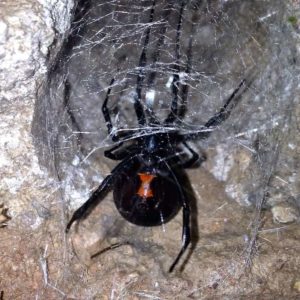
Latrodectus Hersperus – Western Black Widow
In the United States, black widows are often confused with the non-dangerous Steatoda grossa, fittingly called the false black widow. This spider is closely related to the widow but does never have red markings on its belly or back. The false widow can be somewhat brown or purple. Its bite can also cause nausea and other symptoms but not as severe as a widow.
Are there brown recluse spiders in Washington State?
The question whether there are brown recluse (Loxosceles reclusa) spiders in Washington State is often brought to us by readers. Generally, it can be answered with a no. The range of the brown recluse doesn’t even come close to any of the Washington State borders. Not even by a 1,000 miles. Recluse spiders prefer warm climate and are mostly found in the Southern U.S. On the West Coast, they aren’t even seen as far north as San Francisco.
While there are some reports of people seeing recluse spiders in Washington, the majority of them are false identifications of house spiders or other recluse look-alikes. There have been very few confirmed sightings of brown recluse spiders that might have traveled into the state on cargo. But the chances of you finding such a spider and getting bitten is almost zero. And remember: around ten times more people in the U.S. die each year from bee or wasp stings than from spider bites (Click here for more spider facts).
Click on the post below to learn more about the brown recluse and its native range in the United States:
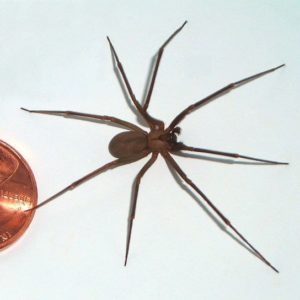
Loxosceles reclusa – Brown Recluse
Are hobo spiders dangerous?
Hobo spiders, Eratigena agrestis, are a common spider in the Pacific Northwest. And they have a bad reputation as being deadly and aggressive. A new article from as recent as 1990 (just over 30 years ago) states that around 5% of untreated hobo spider bites result in death.
However, not one single casualty from a hobo spider has been reported in the last decades. Even bites of medical significance are nonexistent. The CDC has removed the hobo spider from the list of medically significant spiders in the U.S. Scientists are confident that a bite of a hobo spider causes nothing but some local pain and swelling. But, and this is true for any spider bite, if you feel nauseous or experience unusually strong swelling or pain, consult a medical professional. As with any open wound or venom, allergic reactions or secondary infections can happen with any spider bite (but are very rare).
Also, many hobo spider sightings are misidentifications of the giant house spider that is also very common in the Pacific Northwest.
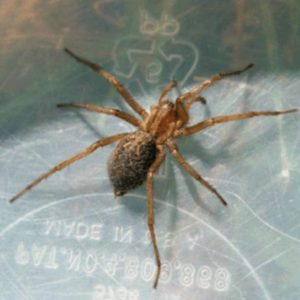
Eratigena Agrestis – Hobo Spider
Common Spiders in Washington State
To wrap up the first few paragraphs: if you aren’t looking at a black widow spider, you are almost certainly looking at a harmless spider that will not be able to hurt you or your pets. The most common spiders in Washington State are giant house spiders, jumping spiders and orb weavers.
Common Washington House Spiders
The giant house spider (Eratigena atrica) was introduced to the U.S. from Europe and has since created a sizeable population in the Pacific Northwest. It is one of the most commonly seen spiders in Western Washington State. The close relative and look-alike of the hobo spider creates funnel shaped webs and feels at home inside warm structures. The giant house spider is the biggest spider in Washington State and the Seattle area, reaching a leg span of 1.8 inches (45 mm).
Other spiders that like the comfort of your homes are the invasive gray house spider (Badumna longinqus), introduced to the U.S. West Coast from Australia, cobweb spiders of the genus Steatoda (false widows), common house spiders (Parasteatoda tepidariorum) as well as daddy long leg spiders, or cellar spiders (Pholcidae). You can click on the images or titles below to learn more about each spider species.
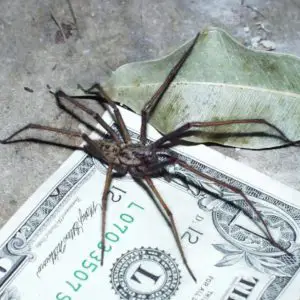
Eratigena Atrica – Giant House Spider
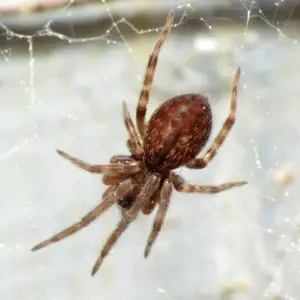
Gray House Spider – Badumna Longinqua
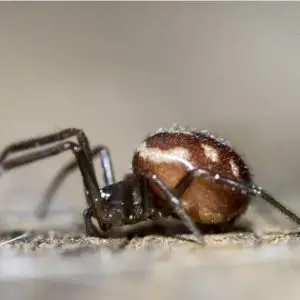
Steatoda Grossa – False Black Widow Spider

Eratigena Agrestis – Hobo Spider
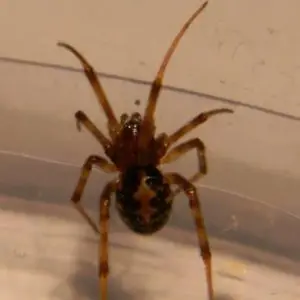
Steatoda Triangulosa – Triangulate Cobweb Spider
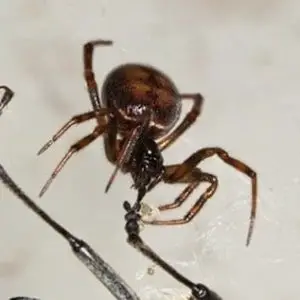
Steatoda Bipunctata – Rabbit Hutch Spider
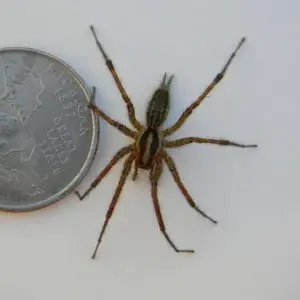
Agelenopsis – American Grass Spider
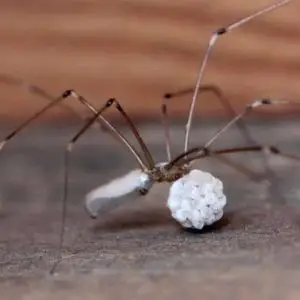
Pholcidae – Daddy Long-Legs or Cellar Spider
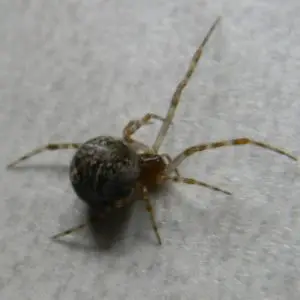
Parasteatoda tepidariorum – The Common House Spider
Jumping Spiders
Jumping spiders of the genus Salticidae are the largest spider family in the world. In Washington, around 10% of the spider species is part of the jumping spider families. Jumping spiders are mostly small to medium-sized spiders (up to 0.5 inches in size) with relatively short legs. They have the ability to jump distances of up to 45 times their own body size by abruptly increasing the blood pressure in the hind legs. Here are the most common jumping spiders in Washington State:
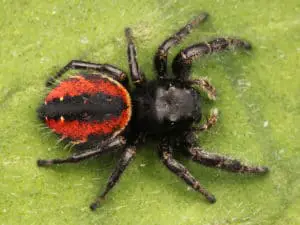
Phidippus Johnsoni – Red-Backed Jumping Spider
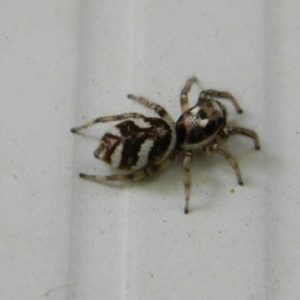
Salticus Scenicus – Zebra Spider
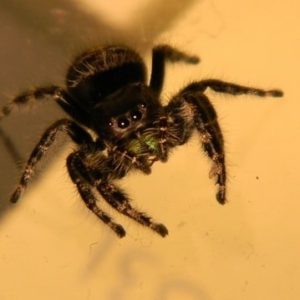
Phidippus audax – Daring Jumping Spider
Orb Weaver Spiders
Orb weaver spiders are the often colorful spiders that spin large orb-shaped webs in the forest or in our gardens. Orb weavers are not aggressive spiders and their bites are not dangerous. They feed on small insects that get caught in their webs at night. The most commonly found orb weaver is the European garden spider (Araneus diadematus), introduced from Europe. Here are the most common Washington orb weaver spiders:
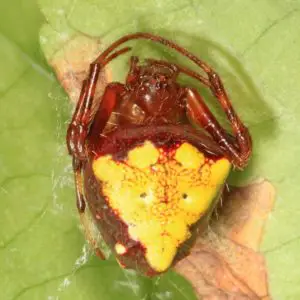
Verrucosa Arenata – Arrowhead Spider
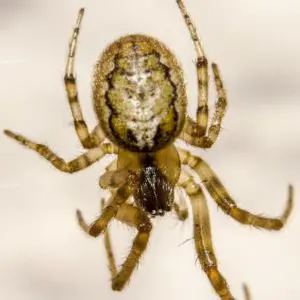
Missing Sector Orb Weaver – Zygiella X-Notata
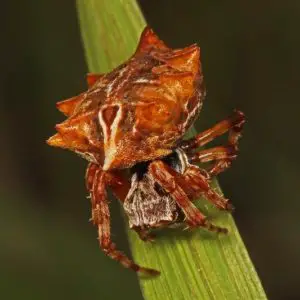
Acanthepeira Stellata – Starbellied Orb Weaver
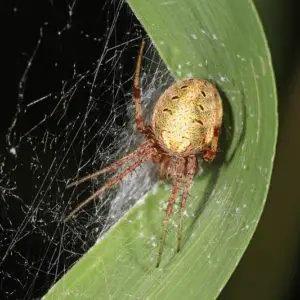
Neoscona Arabesca – Arabesque Orb Weaver
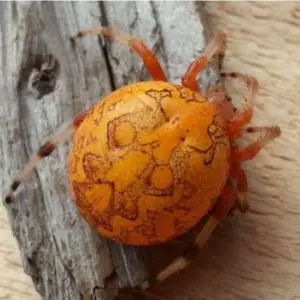
Araneus Marmoreus – Marbled Orb Weaver
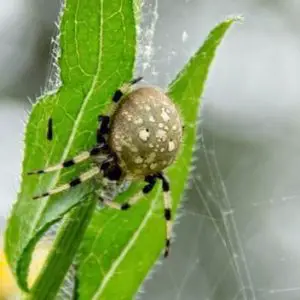
Araneus Trifolium – Shamrock Spider
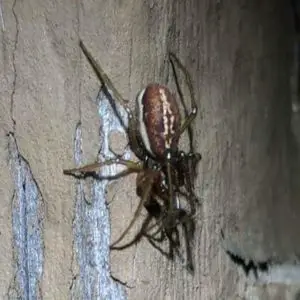
Pachygnatha
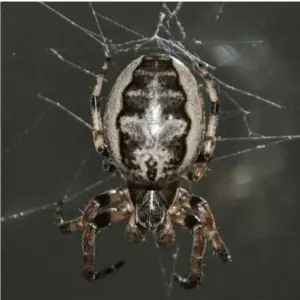
Larinioides Cornutus – Furrow Spider
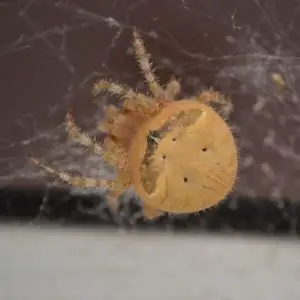
Araneus Gemmoides – Cat-Faced Spider or Jewel Spider
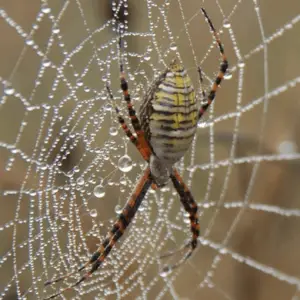
Argiope Trifasciata – Banded Garden Spider
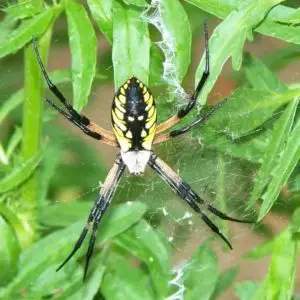
Argiope Aurantia – Black and Yellow Garden Spider
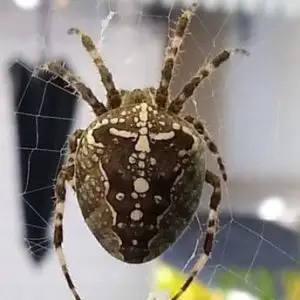
Araneus diadematus – The European Garden Spider
Other common Washington spiders
Below is a list of other common Washington spiders that are mostly found outside of people’s homes:
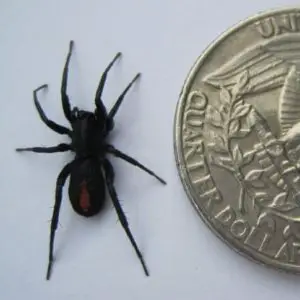
Castianeira Descripta – Red-Spotted Ant Mimic Spider
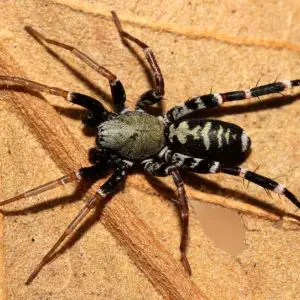
Castianeira Longipalpa – Long-Palped Ant Mimic Sac Spider
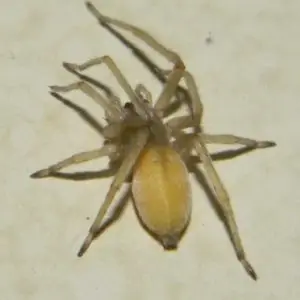
Cheiracanthium Mildei – Northern Yellow Sac Spider
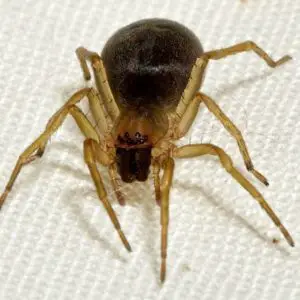
Clubiona – Leaf-Curling Sac Spider
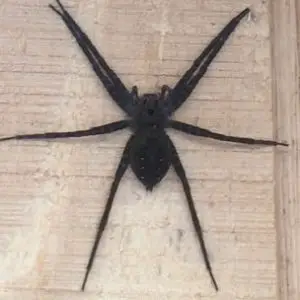
Dolomedes – Fishing Spider
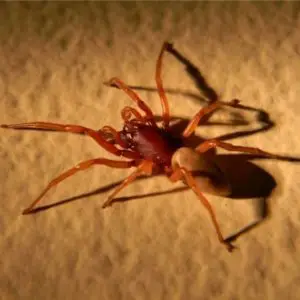
Dysdera Crocata – Woodlouse Spider
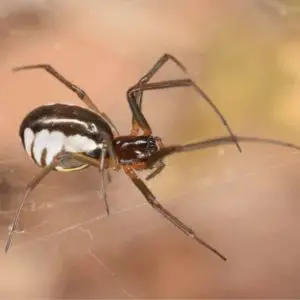
Frontinella Pyramitela – Bowl and Doily Spider

Gray House Spider – Badumna Longinqua
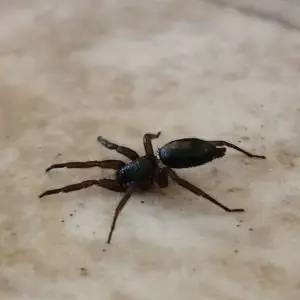
Herpyllus Ecclesiasticus – Eastern Parson Spider
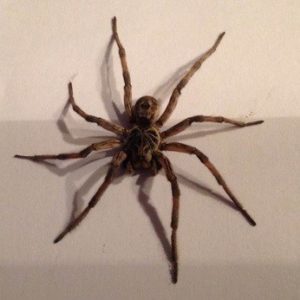
Lycosidae – Wolf Spider
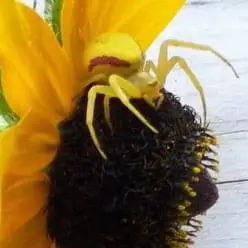
Misumena – Flower Crab Spider
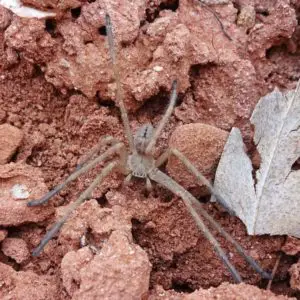
Olios Giganteus – Giant Crab Spider
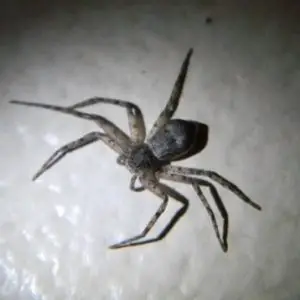
Philodromus – Running Crab Spider
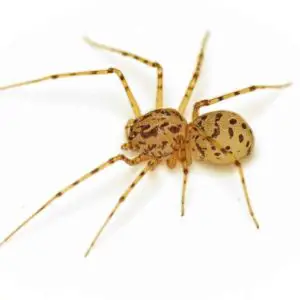
Scytodes Thoracica – Spitting Spider
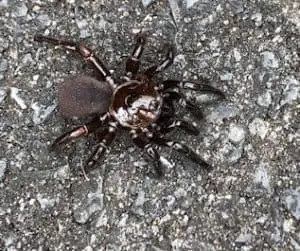
Ummidia – Trap-Door Spider
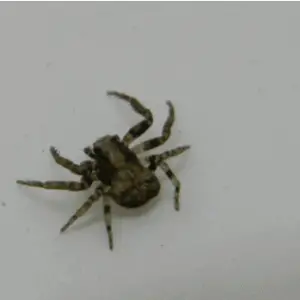
Xysticus – Ground Crab Spider
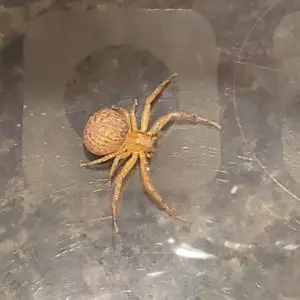
Xysticus Funestus – Deadly Ground Crab Spider
Identifying Spiders in Washington
If you have found a spider in Washington State that you were not able to identify from the images above, we can help you identify your spider. Head to this page and use our spider identification tool. This tool will suggest a few potential spider species after you answer a few questions. If you still can’t identify the spider, simply upload a picture of it and we will do our best to get back to you with an identification. Head to the spider identification page by clicking here.
Looking for a handy identification guide for spiders in Washington State? Check out our Washington spider identification guide ebook or the paperback version on Amazon – the best Washington spider identification book out there!
